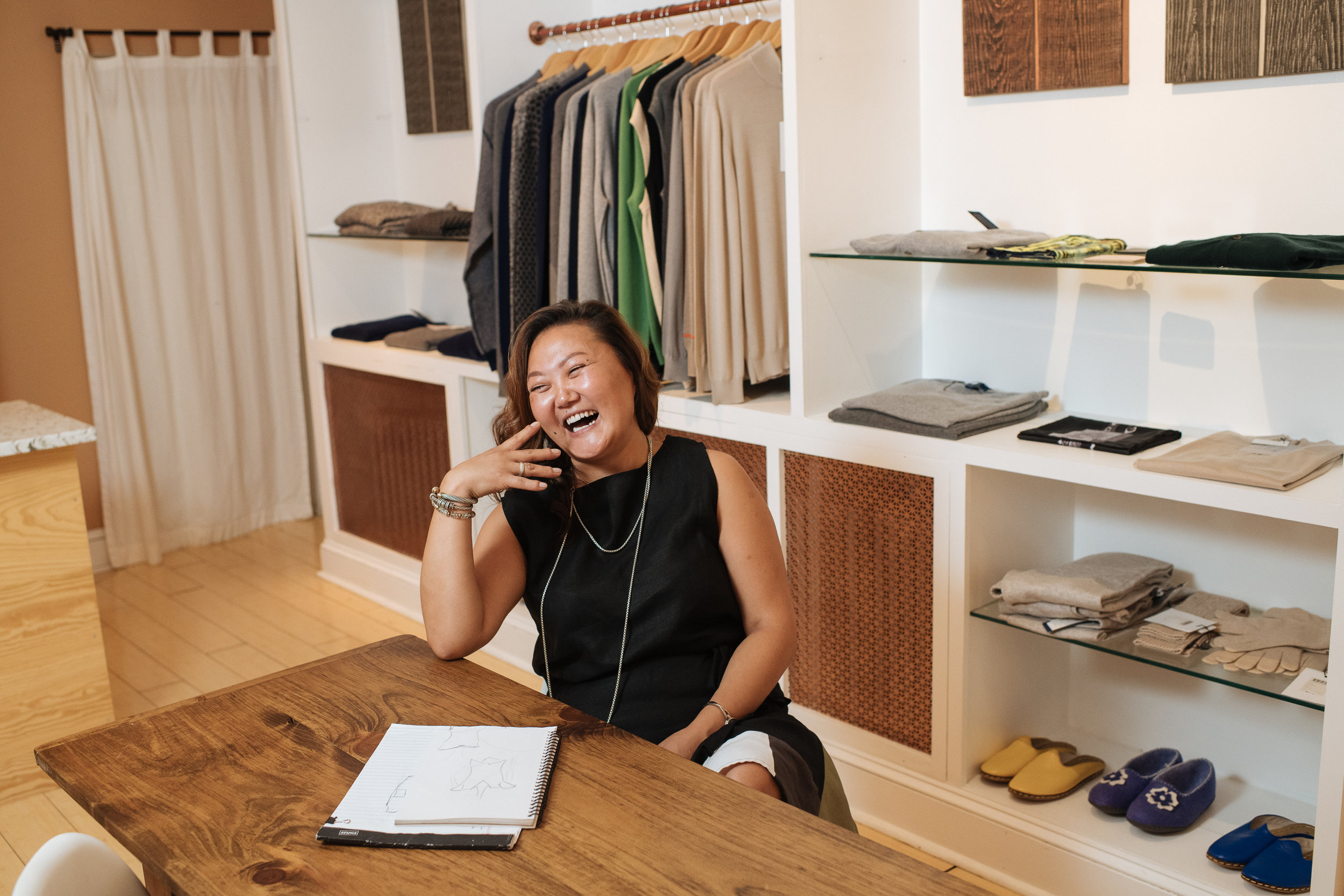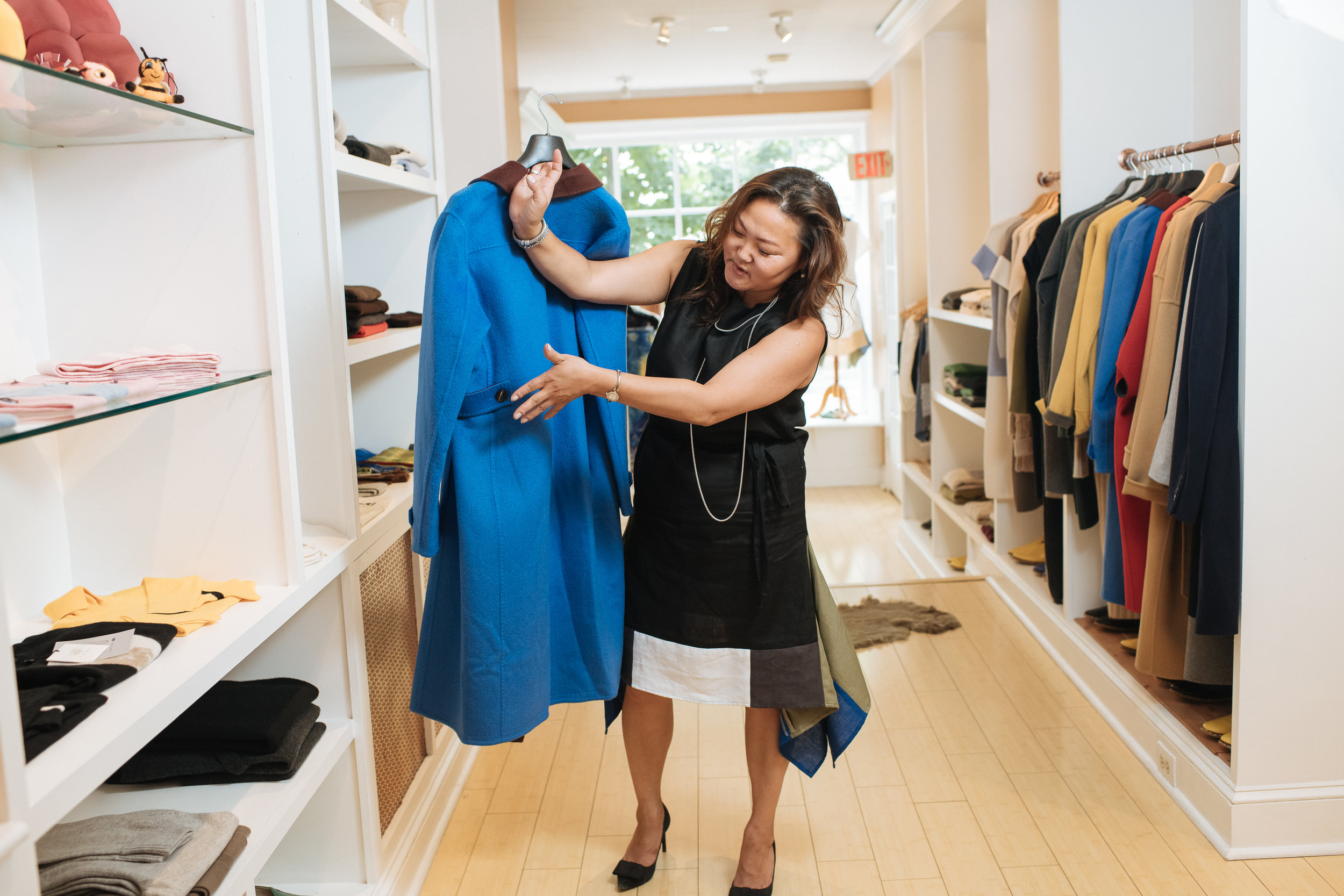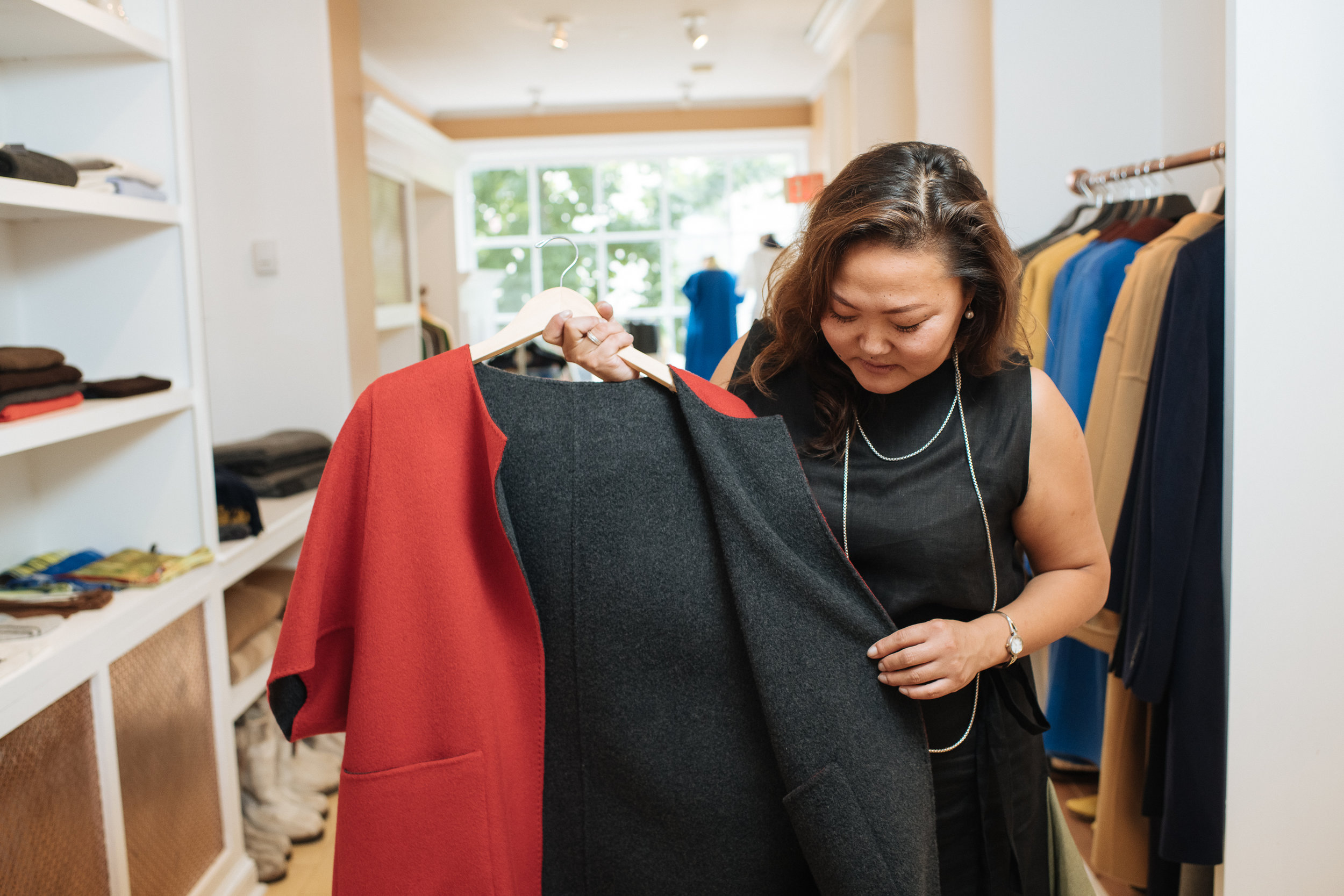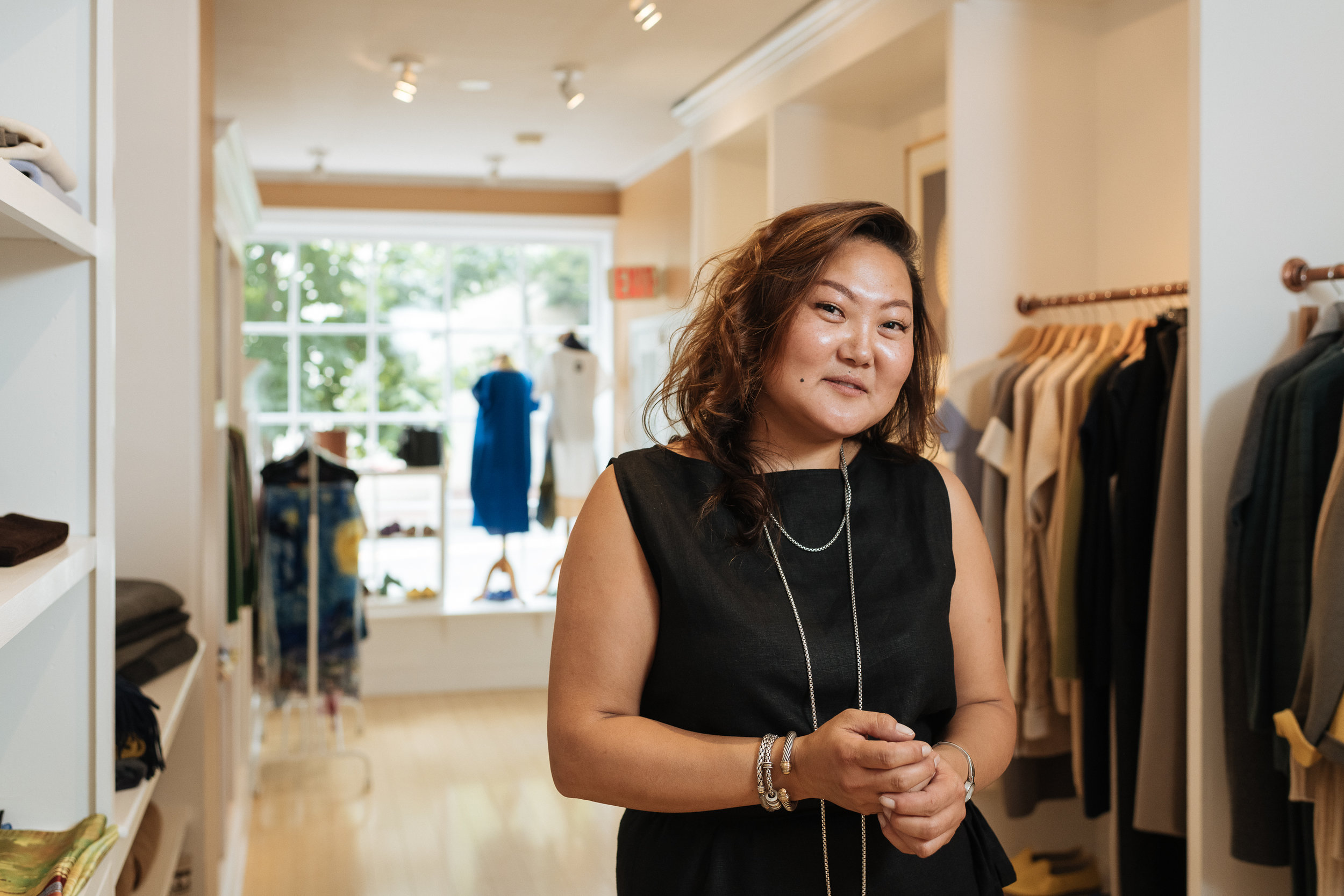‘I Want to Represent My Home Country of Mongolia’
Tosca Metz
T&U Mongolian Cashmere by GOBI
1663 Wisconsin Ave NW
Fifty miles from the Russian border, Tosca Metz grew up in rural Mongolia—the daughter of a farmer and a seamstress. Surrounded by horses, cows and cashmere goats, she spent her childhood learning how to sew—the nomadic herders always at work in the background.
More than 6,000 miles away, Tosca would eventually marry those worlds.
‘I always have a love for textiles. I learned sitting there with my mother, making clothes for my dolls. My oldest sister was also in textiles. She would knit, sew, everything. I was in a different era than my sisters, 12 years younger, and I saw their fashion and sense of style growing up, and I wanted to look for that.’
In 2007, Tosca graduated from college with a hospitality degree, moving to the U.S in search of better opportunities. She didn’t speak any English, but spent the next few years exporting textiles and dreaming up a business with her college friend, Una.
‘I started with a little Etsy shop, but I wanted to take it to the next level and have organic, natural handmade goods. I became a single mom, and I wanted to provide for my kids and have the flexibility for them as well, not working 9 to 5 strictly. To support the children and be there for them, and for my own good and hope and dreams. I wanted to build a brand.’
Three years ago, Tosca made the leap—teaming up with her friend to open T&U Mongolian Cashmere by GOBI in Book Hill.
T&U is a certified distributor of the GOBI line, and carries summer linens that Tosca designs, cuts, and produces herself. Soon, she’ll also debut her new, custom-made fall and winter collection—all sustainably sourced, thanks to the relationships she’s developed in her home country, where 45% of the world’s cashmere is produced.
‘We have a type of Mongolian goat that carries a lot more cashmere than other countries because we have a colder climate. They have to have a lot of cashmere to survive during the winter so they shed it in the spring before it gets hot. Before they shed the cashmere, we just call to get it off the goat. We support all the nomads and herders, because that’s how they make their money.’
In addition to cashmere, Tosca carries Western and Central Mongolian yak wool, leather goods from Turkey and Italy, and hand-made boots from Siberia—the latter sourced by her family, who frequently crosses the Russian border for such finds. For everything else, she works with small, women-owned businesses—many of whom make Tosca’s designs for their own clientele.
‘I wanted to support women, with my custom order requests going to them instead of a corporation. I can be flexible that way. Clients bring 30-year-old cashmere robes and ask if I can recreate it. I take a picture and send it to Mongolia. In a corporation, I have to order at least five per size. That makes it very difficult for a small business.’
Mongolia is famous for its cashmere, but beyond that, Tosca says people know very little about her small but independent country—often confusing it for part of China. She hopes her presence on Wisconsin Avenue will not only bring a piece of her home to DC, but educate others.
‘People always ask me, ‘Did you live in a yurt?’ No, I lived in a house—yurts are more for nomads or herders following the herds around the seasons. But it’s interesting to other people. In Mongolia, we finally have tourism growing. It’s a very new world for the rest of the world. No other language is like ours, we’re land-locked and up high, with a cold climate. Not too many people know about our history.’
Tosca ‘loves, loves, loves’ DC, but her heart will always be in Mongolia. She visits every two or three years, both to see family, and work with the female cashmere manufacturers there.
As the business expands, Tosca is doing her best as a mostly one-woman show—relying heavily on word-of-mouth and repeat business. She still hasn’t cornered the tourist market, but is confident her prices and authentic cashmere can’t be beat.
‘I love the community here, and hopefully the beginning of my fourth year will bring much more. I want people to see someone wearing my clothes and ask where it’s from. Even when I was a child, I would always play with clothes, and rip things and make them into other things. It was always in me.’







